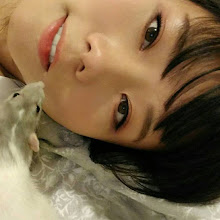
For many years I believed that most of so-called ‘innovative designs’ in industrial design market often referred to luxurious items that is not essential to daily life, for example electronic devices or machine designs. This is why the phrase “The world doesn’t need any more stuff” struck me so hard when I read it from Nancy’s blog entry. I, too, have been thinking about the same thing all the time – although I am very interested in designs that strives for saving nature and energy, I wasn’t very intrigued by ‘new sleek aesthetic design’ which is flooding into the market everyday. I do appreciate successful visual designs of course – that’s why I chose illustration as my major – however when it came to industrial design, I couldn’t help myself but to think that how this extra piece of metal that has been attached to this cup could have been used for making something that is useful; the earth is running out of resources after all.
This idea has driven me through as I did the researches, and at certain point I came across a website of an organization called Design for the Other 90%. In the homepage they informed me about the fact that 90% of total population of 6.5 billion, which it makes 5.8 billion, have little or no access to what many of us take for granted; nearly half of them do not have regular access to food, drinkable water or shelter. 90% is a huge ratio if you think about it; it is plainly shocking how privileged I am to be able to sit in this warm dorm room with light over my laptop and typing my words down (which is, in a way a exercise which probably won’t help me to put down food on my table). Hopefully I managed to find several websites of organizations and individual designer team which specifically focused on developing products that would help refugees to live a better life, while having the manufacturing cost at the minimal and/or using materials that is easy to get.
Thanks to many organizations and designers who dedicated their talent and effort to help the refugee world wide, I was able to find many designs that are both realistic and idealistic, such as flood-resistant architecture and floating house for constantly flooding area (designed for New Orleans), accordion shelter that can be shaped freely, housing that automatically filters rain water by evaporation, water container that can be easily carried and much more. It was also surprising to find out that there is a conference called A Better World by Design being held at Brown University and RISD as I write my essay right now. Reading about the seminar is being updated now in a very interesting blog called Afrigadget, so I suggest every RISD students to check out what we’ve just missed. Afrigadget is also a very helpful website that focuses on solving everyday problem of refugees and poverty in Africa, and it is loaded with writings, photos and videos about inventive products and designs that can enhance lives of African people (this website was chosen by TIME.com as one of the 50 Best Websites 2008 , so I strongly recommend to look around).
Although I was impressed by how so many people were interested in improving ‘the other 90% of people’, I’ve been noticing that many of the organizations and activities are ran by donations and sponsorship. Often people who are living daily lives are oblivious about the hardships which refugees and poverty are facing everyday, like I was a week ago, leading to the consequence that many of the organizations are desperately needing everyone’s attention and financial help. It must be especially hard for them to promote themselves to the public these days because of failing economic problems that are emerging worldwide. However I do believe that if more designers begin to pay attention to this issue and develop ideas that could help, the media and public – which are our consumers – will be aware of what’s happening and also develop interest in the issue. If industrial designers have so much power over the public, why not use the ability to make the world a better place to live in – not only for privileged minorities, but even for the rest of the other 90%?

No comments:
Post a Comment